Image of the Day: October 2011
First Image from ESO's Atacama Large Millimeter/submillimeter Array Observatory
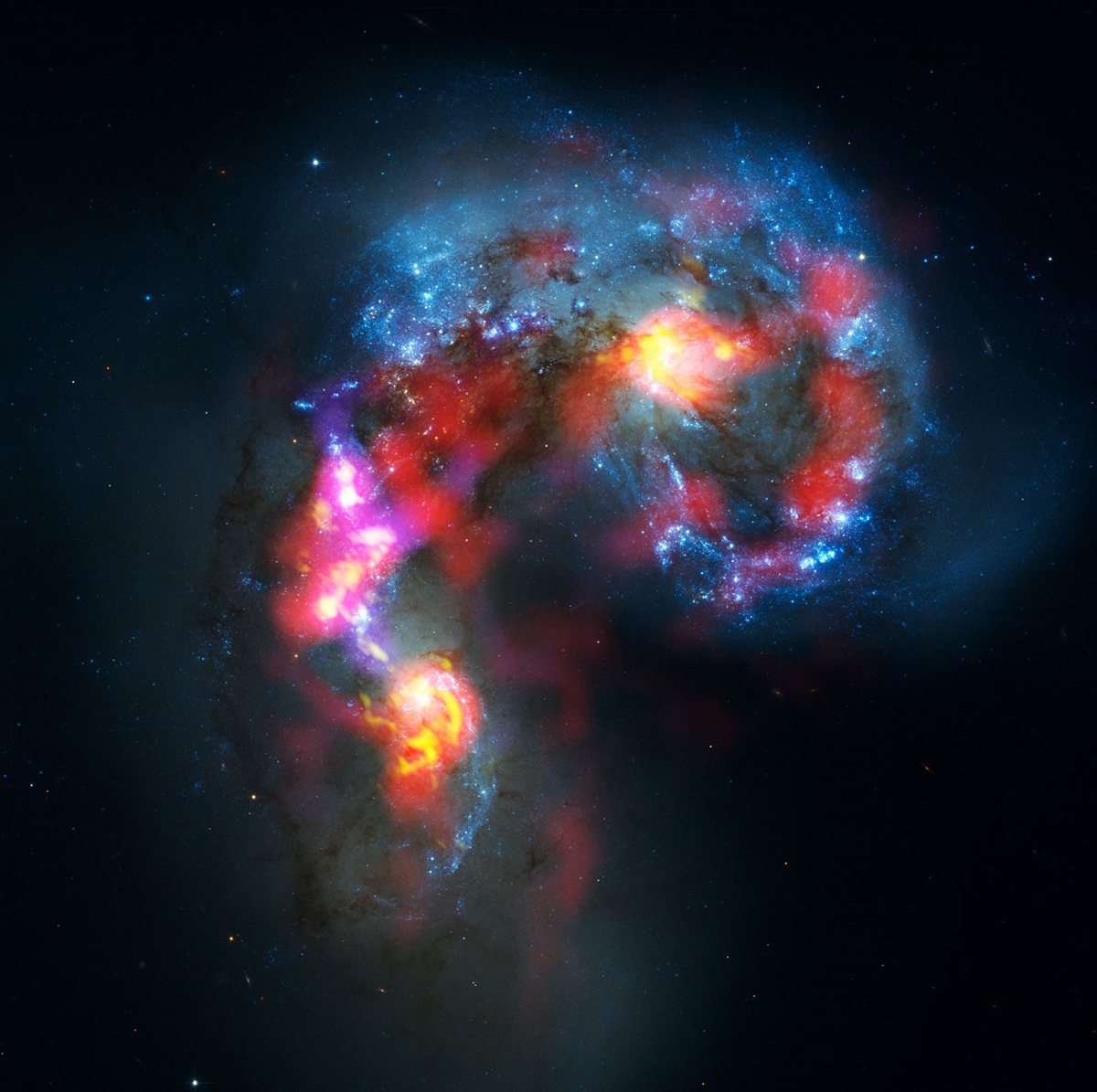
Monday, October 3, 2011: The most complex ground-based astronomy observatory, the Atacama Large Millimeter/submillimeter Array (ALMA), has officially opened for astronomers on the Chajnantor plateau in Chile. The first image released shows the Antennae Galaxies in a way that cannot be seen by visible-light and infrared telescopes. The galaxies, seen here, consist of a pair of colliding galaxies with distorted shapes. ALMA's new view reveals things that we cannot see in visible light: clouds of dense cold gas from which new stars form. Presently, only around a third of ALMA's planned 66 radio antennas operate, yet still this represents the best submillimetre-wavelength image ever made of the Antennae Galaxies.
— Tom Chao
Where Have All the Shuttle Payload Canisters Gone?
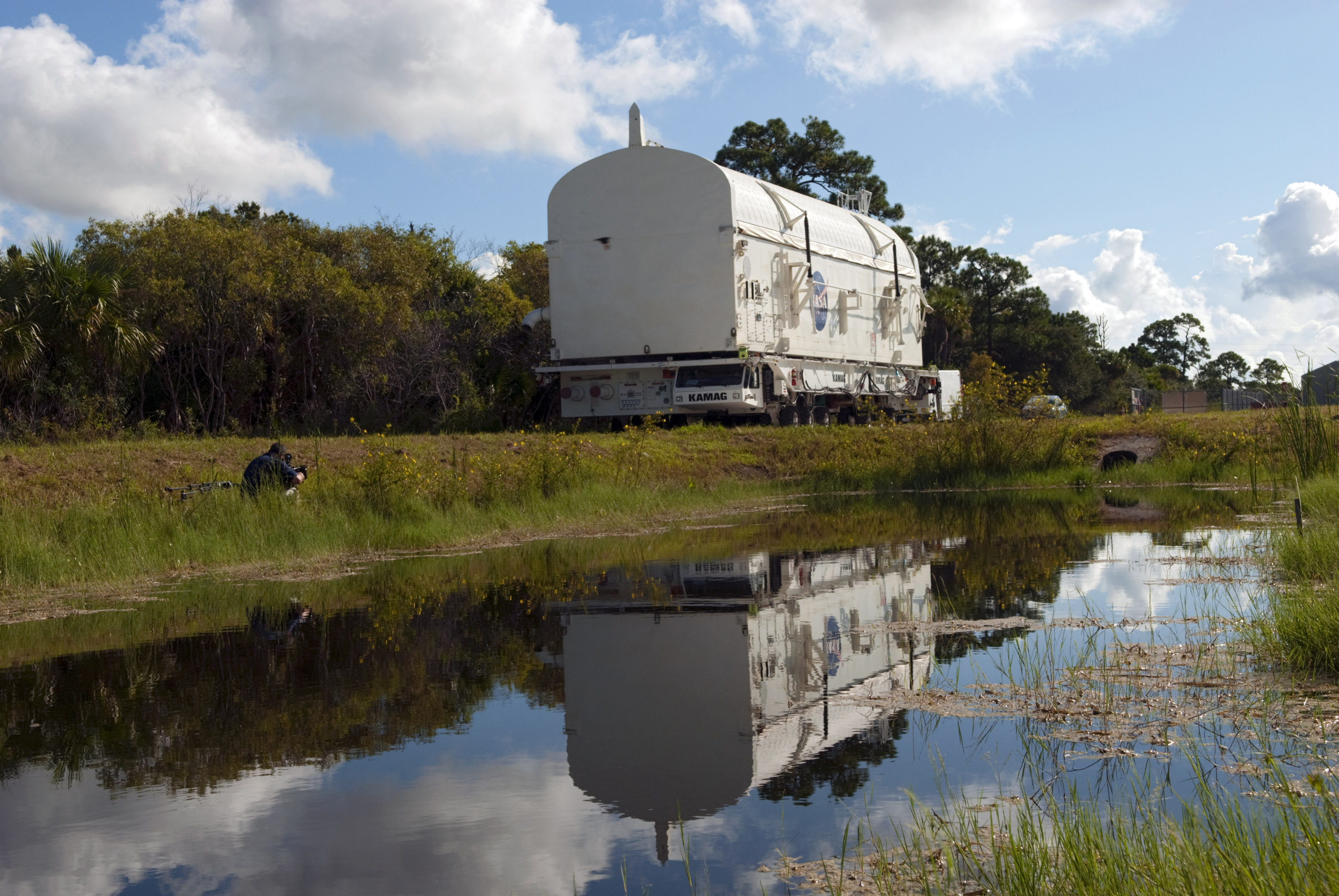
Tuesday, October 4, 2011: At NASA's Kennedy Space Center in Florida, payload canister #1 reflects in the water beside the road to the Reutilization, Recycling and Marketing Facility. The two payload canisters that transported space shuttle payloads to the launch pad are being decommissioned following the end of the Space Shuttle Program. Each canister weighs 110,000 pounds, and stretches 65 feet long, 22 feet wide, and 18 feet high. The canisters were considered as possible artifacts, but their size makes them difficult to transport to off-site locations. Federal and state agencies now will be given the opportunity to screen the canisters for potential use before a final decision is made on their disposition.
— Tom Chao
Star Castle
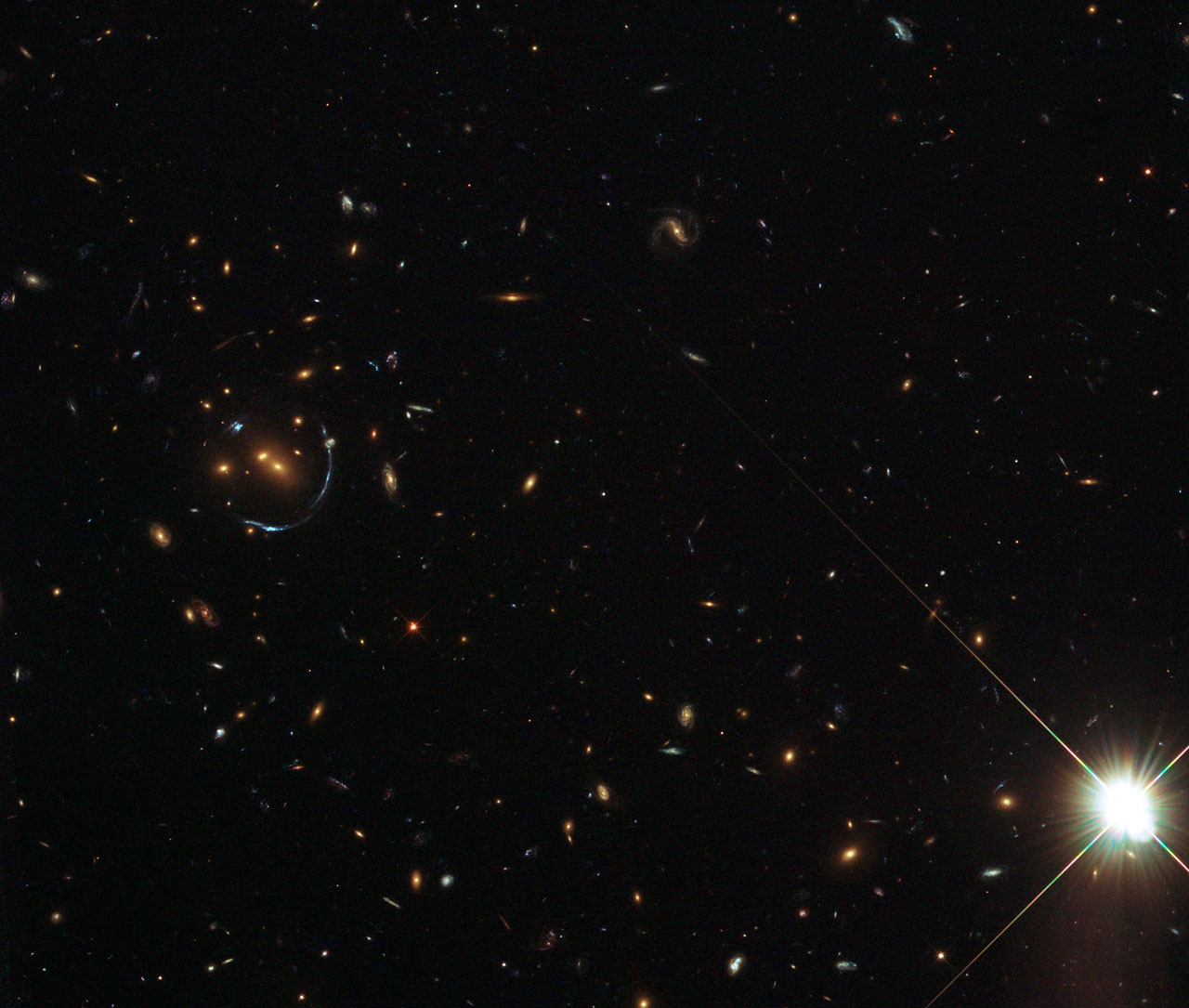
Wednesday, October 5, 2011: Strange structures appear in a galaxy cluster around an object called LRG-4-606. LRG stands for Luminous Red Galaxy, a name applied to a large collection of bright red galaxies, mostly massive elliptical galaxies containing huge numbers of old stars. At left, blue galaxies in the background appear to stretch and warp out of shape into pale blue arcs. An effect called gravitational lensing causes this visual anomaly. The galaxy cluster has such a strong gravitational field that it curves the fabric of space and amplifies the starlight from much more distant galaxies. Here, coincidentally, the alignment of the galaxies has made the separate arcs combine to form a half-circle.
— Tom Chao
Stars in My Pocket Like Grains of Sand
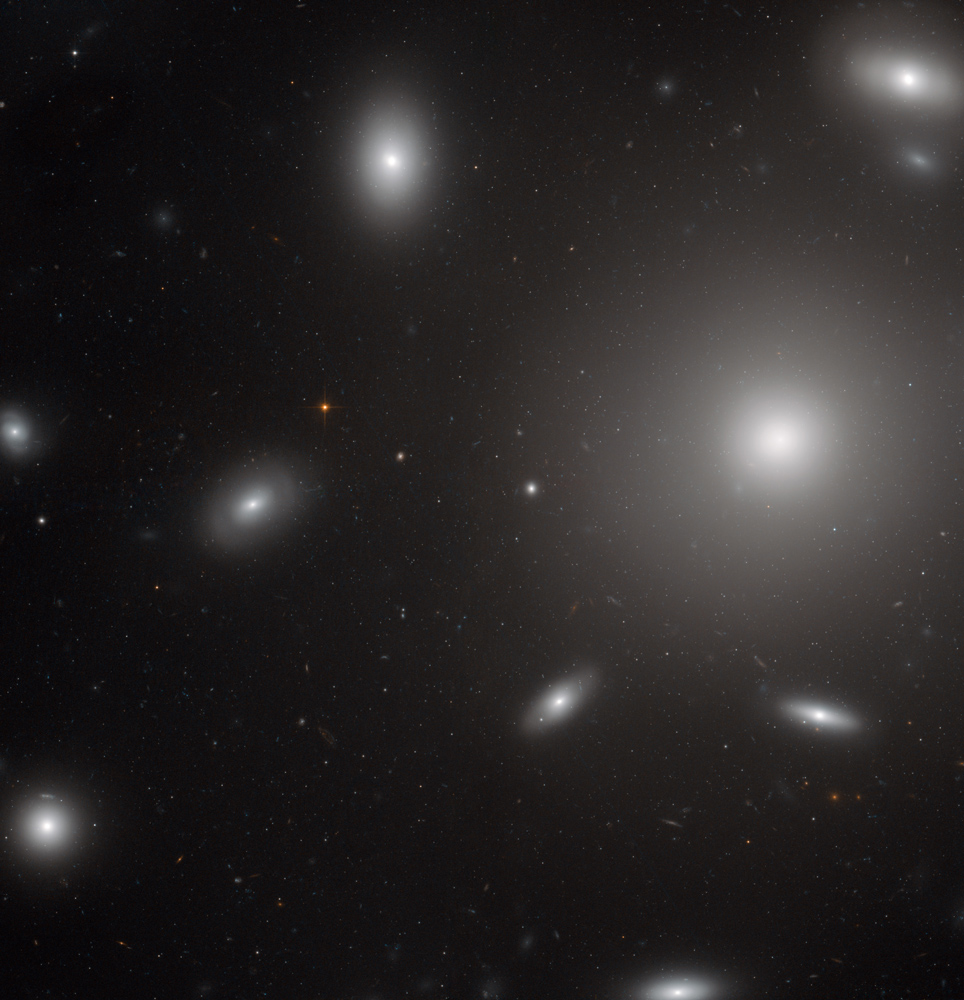
Thursday, October 6, 2011: NGC 4874 shines brightly at the right of the frame, with a bright star-like core surrounded by a hazy halo. It is a giant elliptical galaxy, about ten times larger than the Milky Way. A few of the galaxies of Coma Galaxy Cluster appear to float like Frisbees around NGC 4874. Amazingly, most of the point-like objects around NGC 4874 are actually clusters of stars belonging to the galaxy. Each of these globular star clusters contains many hundreds of thousands of stars.
— Tom Chao
Apple in Space
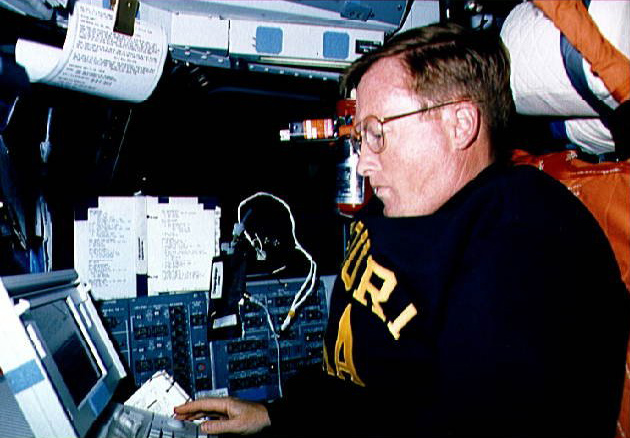
Friday, October 7, 2011: During space shuttle mission STS-41 in 1990, Commander Richard N. Richards uses the first "stock" laptop utilized in a manned mission, the computer in particular being a Macintosh Portable. Here, Richards tests the roller ball cursor control device.
Though the short-lived Macintosh Portable was created during Steve Jobs' absence from Apple Computer, we would like to salute Mr. Jobs for his many contributions to technology.
Burst Your Bubble
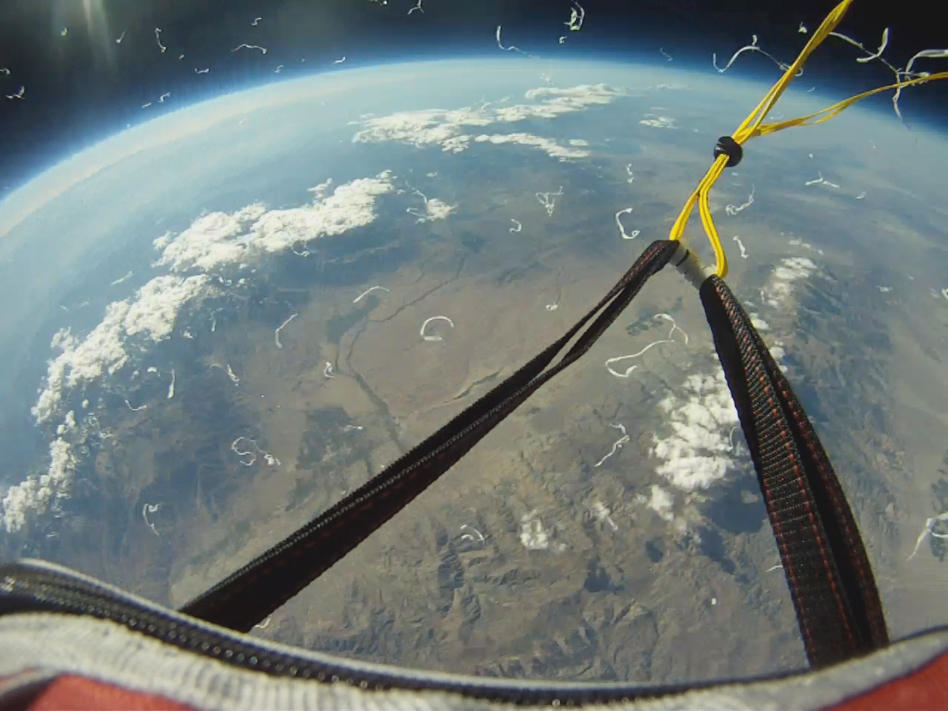
Monday, October 10, 2011: A balloon launched by students in Bishop, California, captured this photo of the Earth's surface as the balloon burst. The straps and yellow cord were holding the balloon to the payload container. The white strips floating in the foreground are pieces of the balloon.
— Tom Chao
Get the Space.com Newsletter
Breaking space news, the latest updates on rocket launches, skywatching events and more!
Spectral Variations on Mercury
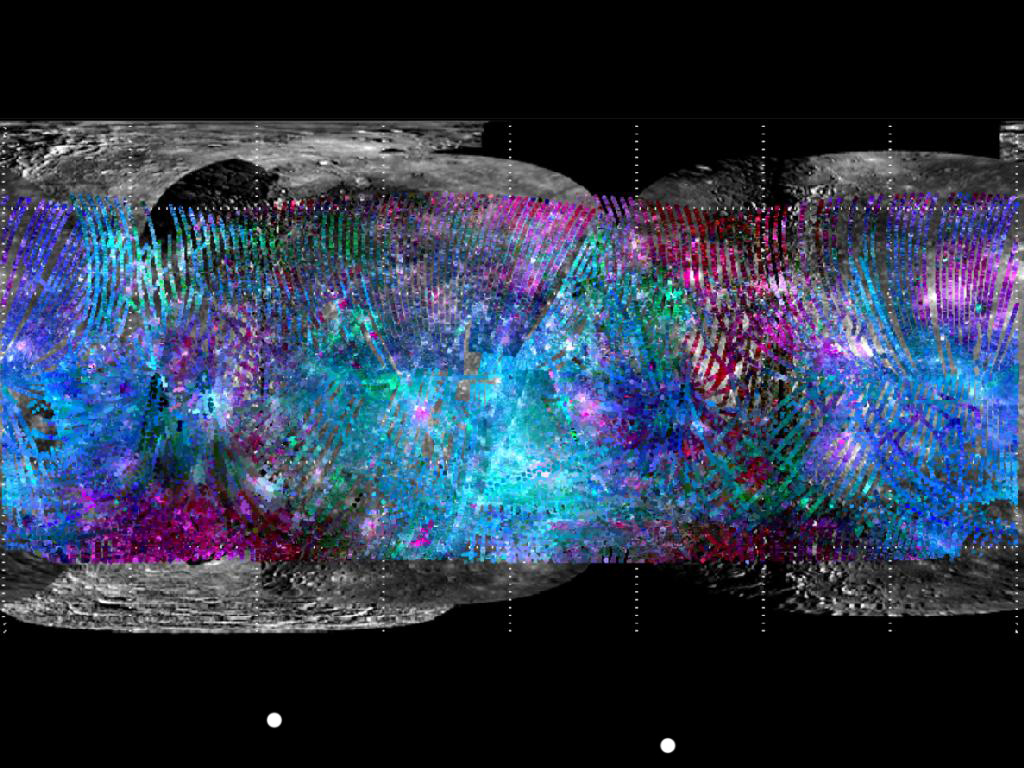
Tuesday, October 11, 2011: The MESSENGER spacecraft has spent its first six months orbiting Mercury (one solar day). Among its activities, the Mercury Atmospheric and Surface Composition Spectrometer (MASCS) obtained over one million spectra of the surface from near one pole to the other and spanning all longitudes. Seen here are individual MASCS observations mapped over a mosaic of images obtained with MESSENGER's Mercury Dual Imaging System (MDIS). The various colors correspond to measurements of spectral variations, of which the ultraviolet variations may contain clues about iron content and the types of rocks that hold it.
— Tom Chao
Center of the Galaxy
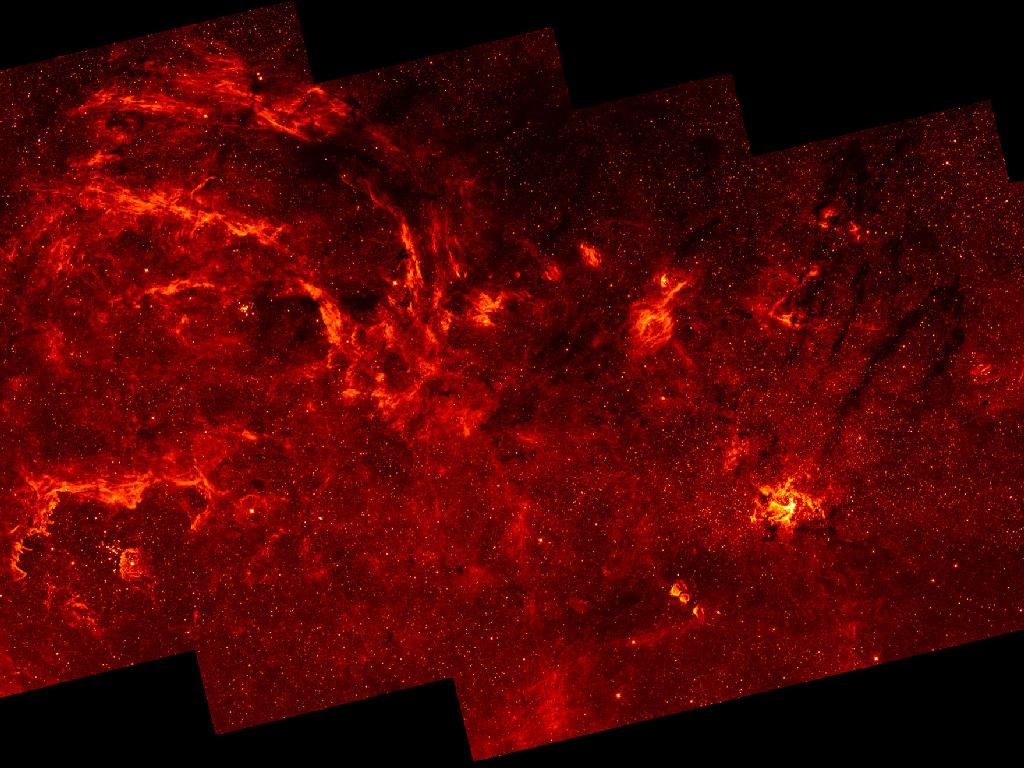
Wednesday, October 12, 2011: This NASA Hubble Space Telescope infrared mosaic image represents the sharpest survey of the Galactic Center to date. It reveals a new population of massive stars and new details in the central 300 x 115 light-years. The lower left region shows pillars of gas sculpted by winds from hot massive stars in the Quintuplet cluster. At the center of the image, ionized gas surrounding the supermassive black hole at the center of the galaxy is confined to a bright spiral. A filter that reveals the glow of hot hydrogen in space was used to produce the false-color image.
— Tom Chao
Islands in the (Dried-Up) Stream
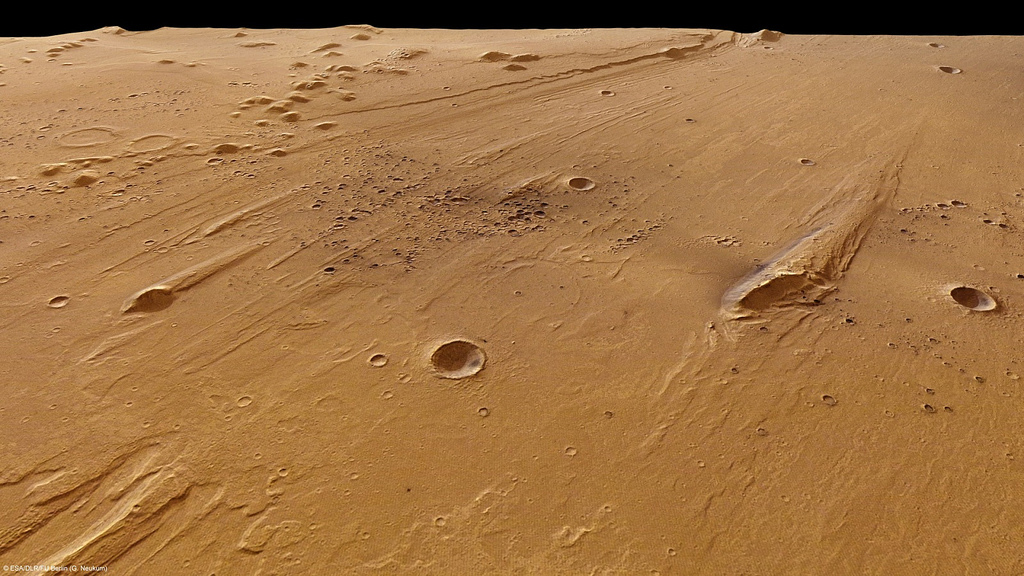
Thursday, October 13, 2011: Mars Express spacecraft obtained this image of Ares Valles region on May 11, 2011. In the distant past, large volumes of water must have rushed through this area. The valley floor contains streamlined islands, indicating the direction taken by the water.
— Tom Chao
Standing Tall
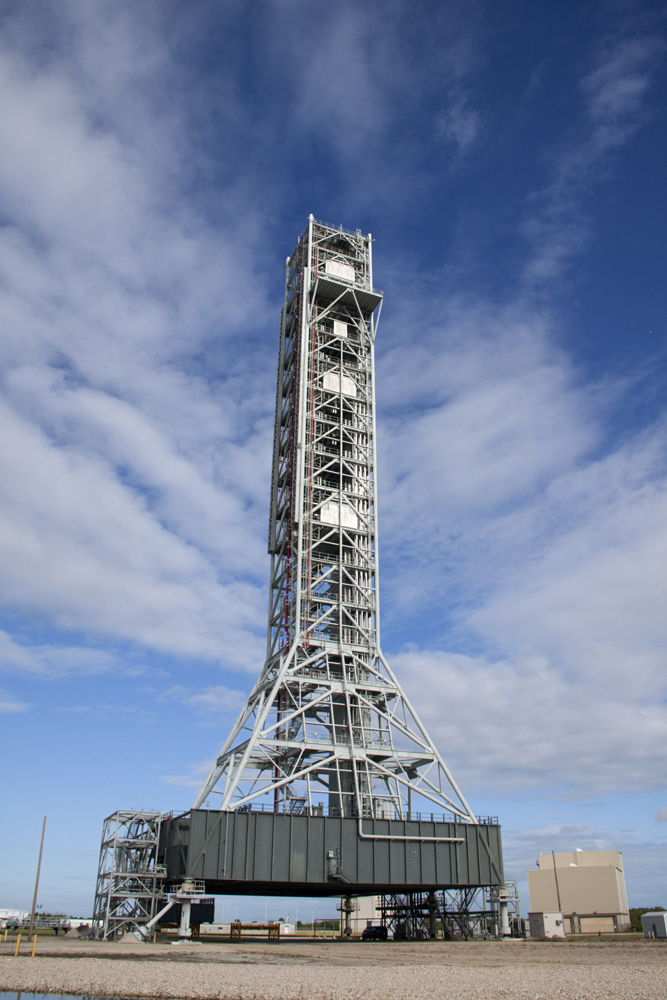
Friday, October 14, 2011: NASA's mobile launcher (ML) support structure stands at Kennedy Space Center in Florida, to supporting the future human spaceflight program. The structure will serve as a launch platform for NASA's Space Launch System (SLS) heavy-lift rocket, which will take astronauts into deep space on missions to asteroids, the moon or Mars. It took about two years to construct the 355-foot-tall ML structure. A media event to detail us of the ML was held on top of the structure on October 11, 2011, where NASA Administrator Charlie Bolden and Center Director Bob Cabana were in attendance.
— Tom Chao
Shadows of Saturn's Rings
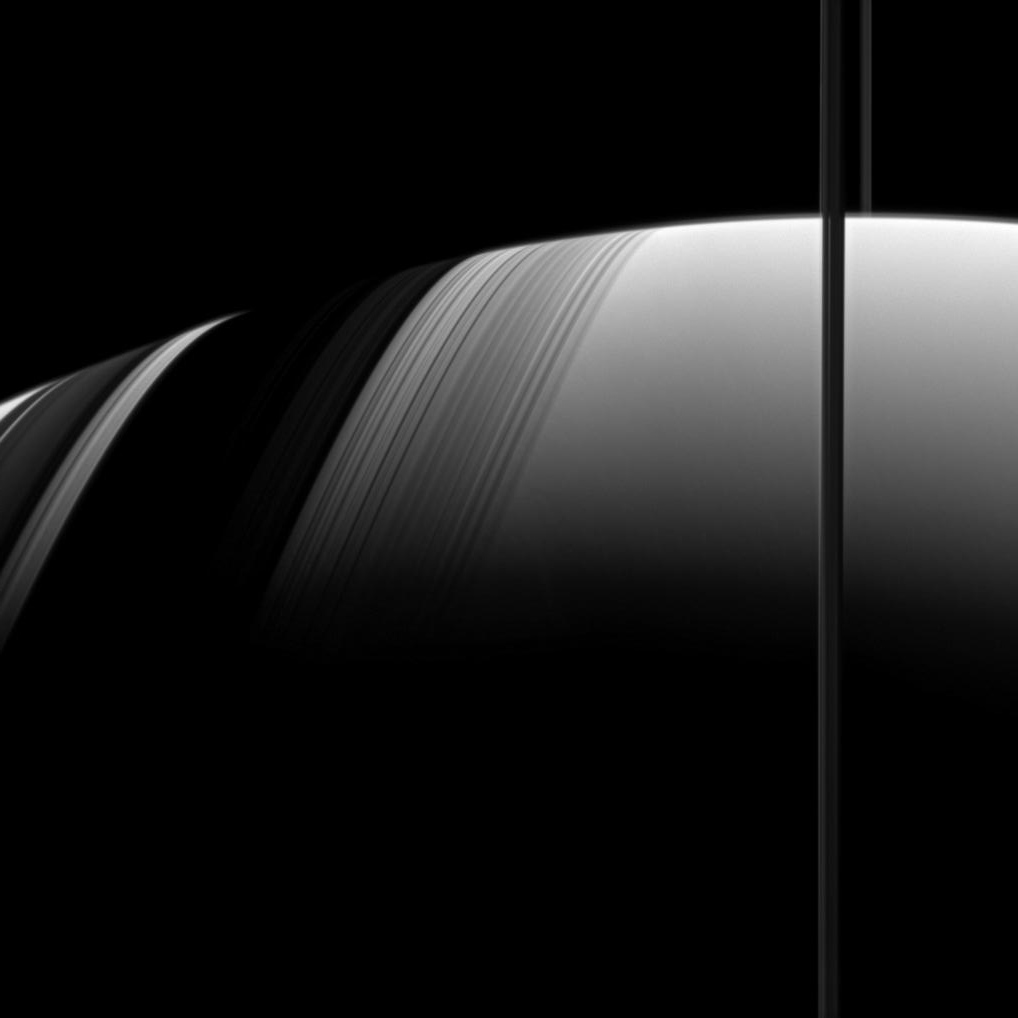
Monday, October 17, 2011: The shadows of Saturn's ring upon the planet's surface clearly mark changing seasons. In 2009, during Saturn's last equinox, the rings threw only a narrow shadow of Saturn. In this Cassini image taken August 2011, the sun rays shine through the rings, the vertical band at right, casting shadows on the southern hemisphere at left.
— Tom Chao
Join our Space Forums to keep talking space on the latest missions, night sky and more! And if you have a news tip, correction or comment, let us know at: community@space.com.

Space.com is the premier source of space exploration, innovation and astronomy news, chronicling (and celebrating) humanity's ongoing expansion across the final frontier. Originally founded in 1999, Space.com is, and always has been, the passion of writers and editors who are space fans and also trained journalists. Our current news team consists of Editor-in-Chief Tariq Malik; Editor Hanneke Weitering, Senior Space Writer Mike Wall; Senior Writer Meghan Bartels; Senior Writer Chelsea Gohd, Senior Writer Tereza Pultarova and Staff Writer Alexander Cox, focusing on e-commerce. Senior Producer Steve Spaleta oversees our space videos, with Diana Whitcroft as our Social Media Editor.









